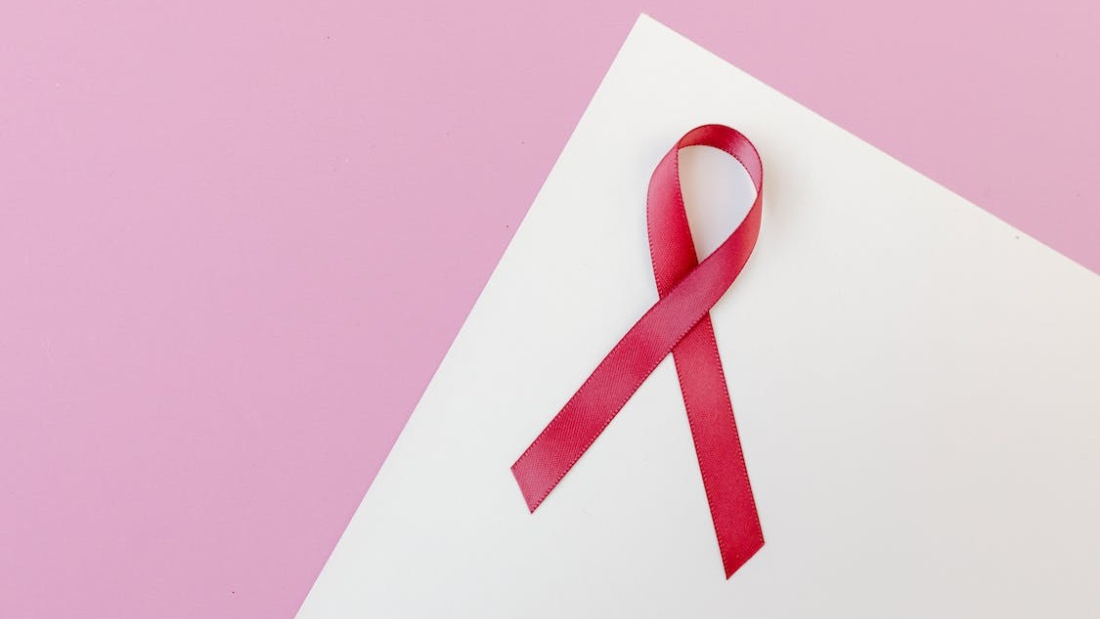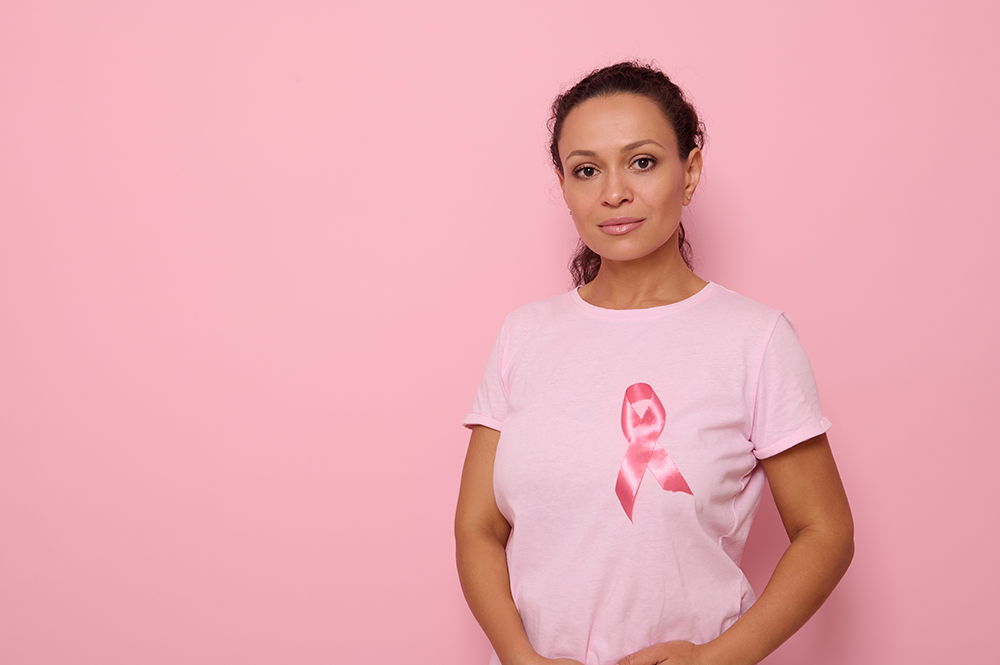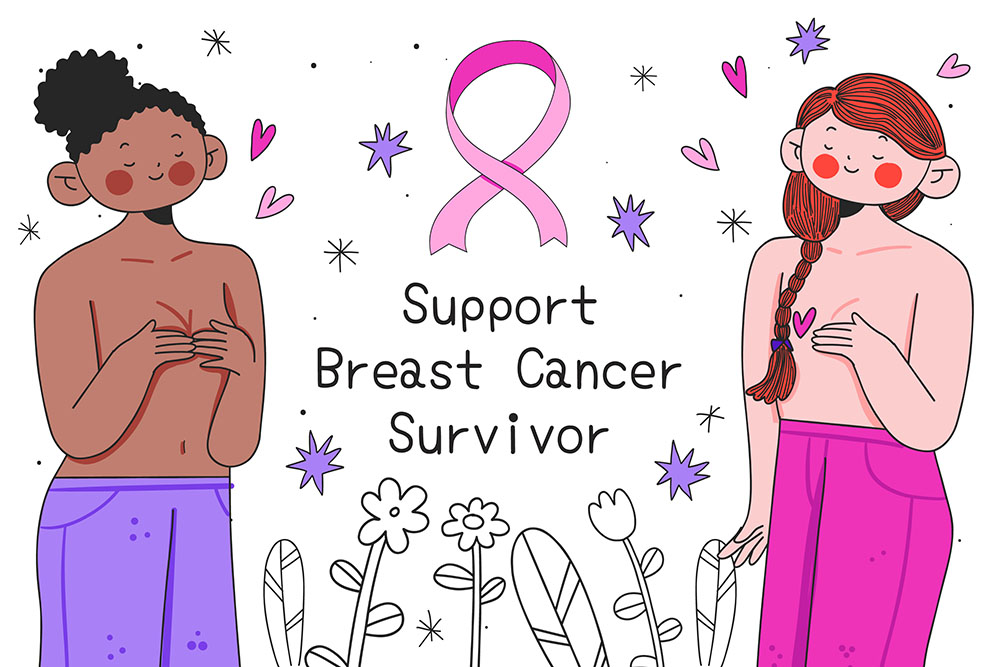Welcome to the captivating realm of Breast Cancer Discovery! This exciting journey has reshaped the way we understand and combat one of the most widespread challenges faced by women globally. Brace yourself for a fascinating exploration into the world of medical breakthroughs, advanced diagnostics, and targeted treatments.
Picture this: a dynamic quest that began with curious minds unraveling the mysteries of breast cancer’s diverse forms. From genetics to molecules, scientists have been on a mission to demystify its complexity. Hold tight as we uncover how cutting-edge technologies like high-speed sequencing and next-gen imaging have unveiled the unique subtypes of breast cancer, each with its own personality when it comes to treatment.
But wait, there’s more! Breast cancer discovery isn’t just about lab coats and microscopes. It’s a collaborative adventure involving sleuth-like epidemiologists tracing risk factors and trailblazing clinical trials that put innovative therapies to the test. Say hello to personalized medicine, where a patient’s genetic fingerprint holds the key to tailor-made treatments that hit the bullseye while sparing side effects.
Ready to dive into a world where oncologists, geneticists, and everyday heroes join forces? This is just a glimpse into the astonishing strides we’ve made in Breast Cancer Discovery. So, buckle up as we journey towards a future where early detection, custom care, and brighter outcomes are more than just dreams—they’re the destination.
Why Does Breast Cancer Happens?
Hi there! Breast cancer can happen due to a mix of reasons, like genetics, hormones, and lifestyle. Let’s uncover why and how we can promote breast health together!
Where Does Breast Cancer Usually Begin?
Breast cancer finds its starting point in the intricate structures of the breast tissue. Most commonly, it originates in the milk ducts, which transport milk from the lobules to the nipple during breastfeeding. This form, known as ductal carcinoma, accounts for a significant portion of breast cancer cases. Alternatively, breast cancer can also initiate in the lobules, where milk is produced. Referred to as lobular carcinoma, this type is less frequent but equally significant.
Understanding these origins is crucial for early detection and effective management. Regular self-exams, clinical screenings, and mammograms help identify any abnormalities in these areas. Detecting breast cancer at an early stage greatly enhances the chances of successful treatment and improved outcomes. By being informed about where breast cancer usually begins, individuals can take proactive steps towards maintaining their breast health and seeking timely medical attention if needed.
Where Does Breast Cancer Usually Spread?
Breast cancer can spread to nearby lymph nodes, which act like filters for the lymphatic system. If not caught early, cancer cells might travel through the bloodstream or lymphatic vessels to other parts of the body. Common places for breast cancer to spread include the bones, liver, lungs, and brain. That’s why catching it early and working closely with healthcare professionals are vital steps in managing the disease and ensuring the best possible outcomes. Regular check-ups, screenings, and staying in tune with your body can help keep tabs on any changes and give you the upper hand in the fight against breast cancer.
What Is the Risk of Breast Cancer by Age?
The risk of breast cancer varies across different age groups. Generally, the risk increases with age. In women under 40, the risk is relatively lower, but it gradually rises as they get older. By age 50, the risk increases significantly.
However, it’s important to note that breast cancer can affect women of all ages, and in some cases, even men. Family history, genetic factors, hormonal changes, and lifestyle choices also play a role in influencing individual risk. Regular screenings, self-exams, and maintaining a healthy lifestyle can help mitigate some of these risks and aid in early detection.
Remember, each person’s risk profile is unique. Consulting with healthcare professionals can provide personalized insights into your risk factors and guide you in making informed decisions about your breast health.
What Are the 1st Signs of Breast Cancer?
The early signs of breast cancer can vary, but there are a few common changes to watch for:
- Lump or Thickening: A new lump, hard knot, or thickening in the breast or underarm area is often the first noticeable sign.
- Change in Size or Shape: Any unexplained change in breast size, shape, or symmetry should be investigated.
- Pain: While most breast cancers are painless, some may cause discomfort or pain. However, not all breast pain is indicative of cancer.
- Skin Changes: Look for redness, dimpling, or puckering of the skin, resembling an orange peel.
- Nipple Changes: Changes in the nipple, such as inversion, scaliness, or discharge (other than breast milk), can be concerning.
- Unexplained Rash: A rash around the nipple or on the breast, which doesn’t improve with usual treatments, should be checked.
- Nipple Discharge: Besides breast milk, any bloody, clear, or yellowish discharge from the nipple should be investigated.
Remember, these signs don’t necessarily mean cancer, but they warrant prompt medical attention. Early detection greatly improves treatment outcomes. Regular self-exams, clinical check-ups, and mammograms can help catch any changes early, ensuring timely intervention. If you notice any unusual changes in your breasts, consult a healthcare professional for proper evaluation.
What Are the 5 Warning Signs of Breast Cancer?
Certainly, here are five warning signs of breast cancer to be aware of:
- New Lump or Mass: Discovering a new lump or mass in the breast or underarm area that feels different from the surrounding tissue can be a potential warning sign.
- Changes in Breast Shape or Size: Unexplained changes in the size, shape, or appearance of one breast or both should be noted.
- Skin Changes: Pay attention to skin changes on the breast, such as redness, dimpling, puckering, or resembling an orange peel (peau d’orange).
- Nipple Changes: Any changes in the nipple, like inversion (turning inward), discharge (other than breast milk), scaliness, or persistent pain, should be evaluated.
- Pain or Discomfort: While breast cancer is often painless, unexplained pain or discomfort in the breast, nipple, or chest area should be assessed.
It’s important to note that these signs don’t definitively mean you have breast cancer, but they should prompt you to seek medical advice for proper evaluation. Early detection is key to successful treatment. Regular self-exams, clinical check-ups, and screenings as recommended by healthcare professionals can help catch potential issues early and ensure timely intervention if needed.
Who Is Most at Risk of Breast Cancer?
Several factors can contribute to an increased risk of breast cancer. Here are some key risk factors:
- Gender: Breast cancer is more common in women. Men can also develop breast cancer, but it’s rare.
- Age: The risk of breast cancer increases as you get older. Most cases occur in women over 50.
- Family History: Having a close family member (mother, sister, or daughter) with breast cancer increases your risk, especially if it occurred at an early age.
- Inherited Gene Mutations: Mutations in certain genes, like BRCA1 and BRCA2, can significantly increase the risk of breast cancer.
- Personal History: If you’ve had breast cancer in one breast, your risk of developing it in the other breast or the same breast again is higher.
- Hormone Replacement Therapy: Prolonged use of hormone replacement therapy (HRT) after menopause may increase the risk.
- Certain Breast Conditions: Some benign breast conditions are associated with a higher risk of developing cancer.
- Radiation Exposure: Previous chest radiation, especially at a young age, can increase risk.
- Reproductive Factors: Early menstruation, late menopause, having your first child at an older age or not having children can contribute to increased risk.
- Lifestyle Factors: Obesity, lack of physical activity, excessive alcohol consumption, and hormone use can also influence risk.
It’s important to note that having one or more risk factors doesn’t guarantee you’ll get breast cancer, and many people with breast cancer have no known risk factors. Regular screenings, self-exams, and a healthy lifestyle can help mitigate risk and promote early detection. If you have concerns about your risk, consult a healthcare professional.
What Puts a Woman at High Risk for Breast Cancer?
Certain factors can increase a woman’s risk of developing breast cancer. Here are some that can put a woman at high risk:
- Family History: Having a first-degree relative (mother, sister, daughter) with breast cancer, especially at a young age, increases risk.
- Inherited Gene Mutations: Mutations in genes like BRCA1 and BRCA2 significantly raise the risk. These mutations can be passed down through generations.
- Personal History: Women who have had breast cancer in one breast are at higher risk of developing it in the other breast or the same breast again.
- Certain Benign Breast Conditions: Some non-cancerous breast conditions increase the risk of developing breast cancer.
- Radiation Exposure: Prior chest radiation therapy, especially during adolescence, increases risk.
- Hormone Replacement Therapy (HRT): Long-term use of HRT, especially combined estrogen-progestin therapy, can elevate risk.
- Reproductive Factors: Early menstruation (before age 12), late menopause (after age 55), and having your first child after age 30 can increase risk.
- Obesity: Being overweight or obese, especially after menopause, is associated with a higher risk.
- Alcohol Consumption: Regular and excessive alcohol consumption increases risk.
- Lack of Physical Activity: Leading a sedentary lifestyle can contribute to higher risk.
- Age: Risk increases with age, especially after 50.
- Race and Ethnicity: Certain racial and ethnic groups, like Ashkenazi Jewish women, have a higher prevalence of certain gene mutations that increase risk.
It’s important to note that having risk factors doesn’t mean a woman will definitely develop breast cancer, and many with breast cancer have no known risk factors. If you have concerns about your risk, discussing them with a healthcare professional can provide personalized guidance on monitoring and prevention strategies.
At What Age Do Females Get Breast Cancer?
Breast cancer can occur at any age, but the risk increases as women get older. The majority of breast cancer cases are diagnosed in women who are over the age of 50. However, breast cancer can affect women of all ages, including those in their 20s and 30s.
Here’s a rough breakdown of age-related risk:
- Under 40: While breast cancer is less common in this age group, it can still occur. About 7% of breast cancer cases are diagnosed in women under 40.
- 40-50: The risk of breast cancer increases as women approach their 50s, and routine mammograms typically begin around age 40 or 50.
- 50 and older: The risk of breast cancer significantly rises with age. The majority of breast cancer cases occur in women over the age of 50.
It’s important for women of all ages to be breast-aware and to promptly report any unusual changes they notice in their breasts to a healthcare professional. Regular self-exams, clinical check-ups, and mammograms (as recommended) are essential for early detection, regardless of age.
Is Breast Cancer Curable?
Breast cancer is a complex disease with different types and stages, so the outcome varies from person to person. While some cases of breast cancer can be cured, others can be effectively managed and treated to extend life and improve its quality.
Early detection is crucial for improving the chances of successful treatment and potential cure. Localized breast cancer that is diagnosed at an early stage before it has spread to other parts of the body (metastasis) often has a higher likelihood of being cured. Treatments such as surgery, radiation therapy, chemotherapy, targeted therapies, and hormone therapy can be effective in treating different types of breast cancer.
However, more advanced or metastatic breast cancer, where cancer has spread to distant parts of the body, may not be considered curable in the traditional sense. In such cases, the focus shifts to managing the disease, prolonging life, and maintaining the best possible quality of life.
Medical advancements, personalized treatment approaches, and ongoing research are continually improving the outcomes for breast cancer patients. Early detection, timely and appropriate treatment, and a strong support system play vital roles in a person’s journey through breast cancer. If you or someone you know is affected by breast cancer, it’s important to consult with healthcare professionals to determine the best course of action based on individual circumstances.
Can Breast Cancer Be Removed?
Yes, breast cancer can often be removed through a combination of surgical procedures. The extent of the surgery depends on factors such as the stage of the cancer, the size and location of the tumor, and the individual’s overall health.
The primary surgical options for removing breast cancer include:
- Lumpectomy: Also known as breast-conserving surgery, a lumpectomy involves removing only the tumor and a small margin of healthy tissue around it. This approach is typically used for early-stage breast cancer when the tumor is relatively small and localized.
- Mastectomy: A mastectomy involves the removal of the entire breast tissue. Depending on the situation, a simple or total mastectomy removes the breast tissue, while a modified radical mastectomy removes the breast tissue along with nearby lymph nodes.
In both cases, the goal is to remove the cancerous tissue while preserving as much healthy tissue as possible. Following surgery, additional treatments such as radiation therapy, chemotherapy, targeted therapy, or hormone therapy might be recommended to ensure that any remaining cancer cells are effectively treated.
It’s important to note that every individual’s situation is unique, and the appropriate treatment plan, including surgery, is determined based on the specific characteristics of the cancer and the patient’s overall health. Consulting with a medical team experienced in breast cancer is crucial for making informed decisions about treatment options.
In the ever-evolving saga of Breast Cancer Discovery, hope shines brighter than ever. This journey, led by dedicated scientists, medical professionals, and courageous survivors, has transformed the landscape of understanding and treating this formidable adversary.
With each breakthrough in genetics, diagnostics, and therapies, we move closer to a world where breast cancer’s impact is minimized. The power of early detection, personalized treatment plans, and supportive communities empowers individuals to face this challenge head-on. As we uncover the intricate details of breast cancer’s behavior, we pave the way for more effective interventions and improved outcomes.
But this journey isn’t solely one of science—it’s a journey of unity and compassion. Through awareness campaigns, fundraisers, and shared stories, we create a tapestry of support that weaves hope into every corner. As we stand hand in hand, we drive forward, turning the pages of discovery to reveal a future where breast cancer is not just battled, but conquered.
So let’s continue this journey, celebrating the strides made and eagerly anticipating the discoveries yet to come. With science as our compass and determination as our guide, we’re on a path toward a world where breast cancer is not just a challenge, but a chapter in the remarkable story of human resilience and progress.
Brought to you by Fomat Medical



